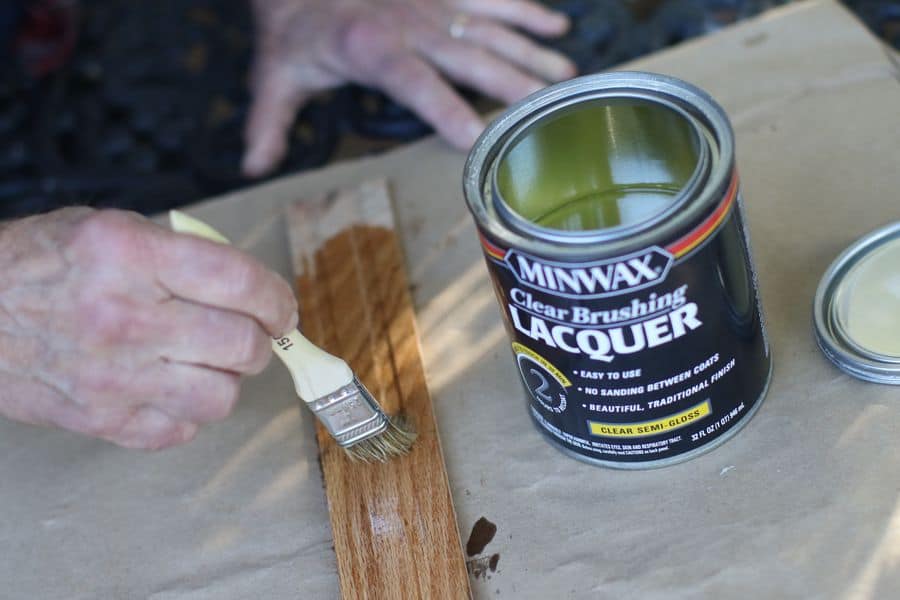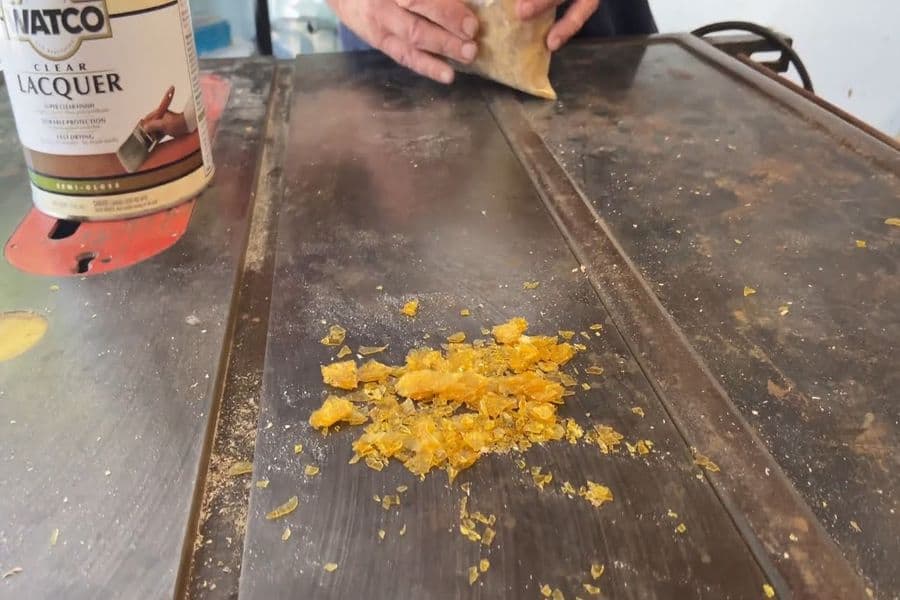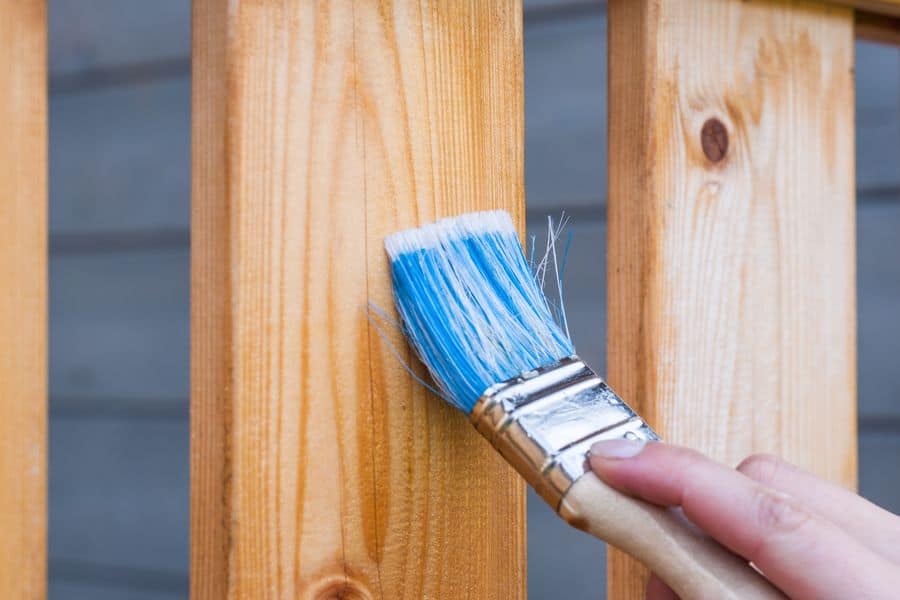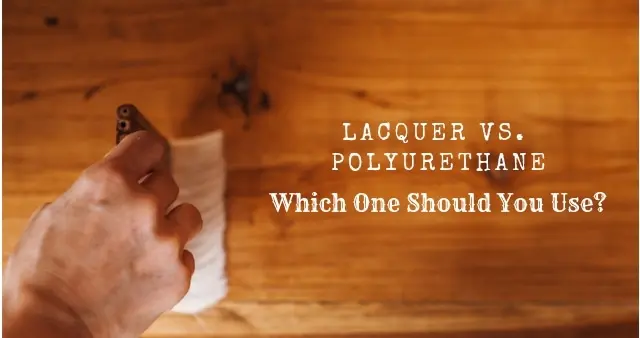Are you looking for the best topcoat for your wooden furniture? Well, then Shellac might be a good choice. But what is Shellac? Is it worth buying, and how durable is Shellac? If you also have these questions in your mind, this guide is a one-stop solution.
Contents
How Durable Is Shellac?
With this simple, quick-drying process, you can give your wood products a lovely natural finish.
Shellac is a non-toxic, flexible wood finish that brings out the natural grain while providing a smooth texture without the plastic-like features of polyurethane or lacquer. Shellac usually is available in clear or amber, but it can also be colored to bring forth a spectrum of colors from golden oak to dark mahogany.

It’s made from flakes of resin excreted by lacs (Asian insects) and dissolved in alcohol. Moreover, it’s easy to use and dries rapidly, and it’s widely accessible at home centers.
However, Shellac isn’t appropriate for all pieces. It’s particularly sensitive to water and even high humidity, and it can vanish in the sun or simply dull with time.
While this less-than-durable finish can be fixed and retouched if needed, it’s usually advisable to shellac decorative wood pieces that won’t get a lot of usages, rather than high-use furniture like a dining table.
A thorough protective shellac coat usually takes multiple thin layers, with some sanding and buffing in between—a procedure that takes time from morning to afternoon.
1. Prep To Your Desired Consistency, Whether You’re Using Homemade Or Store-bought Shellac
Shellac mixed with denatured alcohol in varying concentrations “cuts” to define the density of each coat. Usually, a two-pound cut of Shellac is used to coat the wooden surface. This mix is created by mixing two pounds of Shellac with a gallon of denatured alcohol.
A thinner combination with a more excellent alcohol ratio is typically used as a light sealant before staining wood. A higher shellac ratio results in a thicker blend, resulting in fewer applications but is also more sticky and tougher to work with.
Shellac can either be produced from scratch or bought ready-made. If you want to go the extra mile and make the combination yourself, buy shellac resin flakes and mix them with denatured alcohol, starting with a two-pound cut ratio.
Depending on how the mixture performs, you can add more or fewer shellac flakes to achieve your personal “cut preference.”
To have a thick coat of Shellac, three to four-pound cuts of Shellac mix are prepared with a high Shellac ratio of three to four pounds of Shellac mixed with one gallon of alcohol. You can always add denatured alcohol to thin out pre-made Shellac. Shellac has a limited shelf life, so buy as much as you’ll need for the job.

2. Shellac Helps In Covering Dings And Scratches
It’s simple to repair a shellac finish if it gets damaged. To clean the damaged Shellac from that region, simply soak a rag in alcohol and gently rub it in a circular motion.
Then shellac that portion, and sand in between the base and top coats to build up until it’s even with the rest of the area. Re-coat the entire wooden surface 1-2 times for a smooth and better finish.
You can also fix scratches by applying Shellac with a fine brush to low-areas and buffing smooth.
3. Shellac Shelf Life
Shellac cut with alcohol undergoes a chemical shift that causes it to dry more slowly. If the Shellac is applied after it has begun to go through this process, the resulting finish will be softer and more susceptible to water damage and scratches.
Also, exposing the pre-mixed Shellac to heat will hasten this process, so store it in a cool (less than 24 °C/75 °F) dark place in a firmly sealed container (mason jars work great). Because Shellac gets dissolved in alcohol, it is unaffected by cold weather unless it is subjected to temperatures below 114 °C (-173 °F).
4. Advantages Of Using Shellac
Shellac has the following advantages as long as the surface on which it is applied is not damaged:
- Resistant to water
- Alcohol-resistant
- Use a primer coat to seal and prevent resin or pigment bleeding and keep wood stains from blotching.
- You can use it under almost any other finish. Because of the wax concentration in natural Shellac, polyurethanes have problems bonding effectively. To avoid these issues, simply use de-waxed Shellac.
- Repairing is easy.
- Easy to paint (brush, rag, or spray on, thin cuts work best)
- Easy to re-coat if the initial finish becomes old or damaged (Use appropriate solvent)
- By altering the dissolved shellac concentration, the user can determine how rapidly the Shellac mix gets ready.
- Non-yellowing and non-darkening as it ages — Unlike other finishes, You can apply Shellac in cold temperatures (5 °C/40 °F and below) without worry about adequate drying and curing.

5. Disadvantages Of Using Shellac
- Shellac has a short shelf-life of roughly six months if mixed with alcohol (it destroys the finish)
- Rare incidences of an allergic reaction (skin rash) upon application if you use mixed Shellac that has started to polymerize, you may never be able to dry it.
Frequently Asked Questions
Can I Sand Between Shellac Coats?
Between applications of Shellac, you should always lightly sand with 320 to 400 grit sandpaper. It improves the adhesion of the following layer and eliminates any faults that may have developed during the application process. It prevents minor flaws from compounding over time.
Is It True That Shellac Makes Wood Waterproof?
Shellac is not waterproof, like many other finishes, but it is pretty waterproof. Shellac can tolerate water for up to 4 hours with ease. The resulting off-white stain will go away as it dries, even if the surface is unclean.
Conclusion
From the facts stated above, we can conclude that Shellac offers decent durability to wooden furniture. Being a natural substitute for varnish and Polyutherane, Shellac has a lot to offer. However, its strength is its limitation.
Unlike Polyurethane that provides maximum durability, Shellac can fade away pretty quickly.
Moreover, the base coat takes a lot of time to dry up, and one has to apply multiple coats of Shellac to ensure durability. On the other side, this is not the case with chemical-based topcoats. But talking about environmental concerns, Shellac is a non-fuming material and casts minor side effects on one’s health and surrounding.
